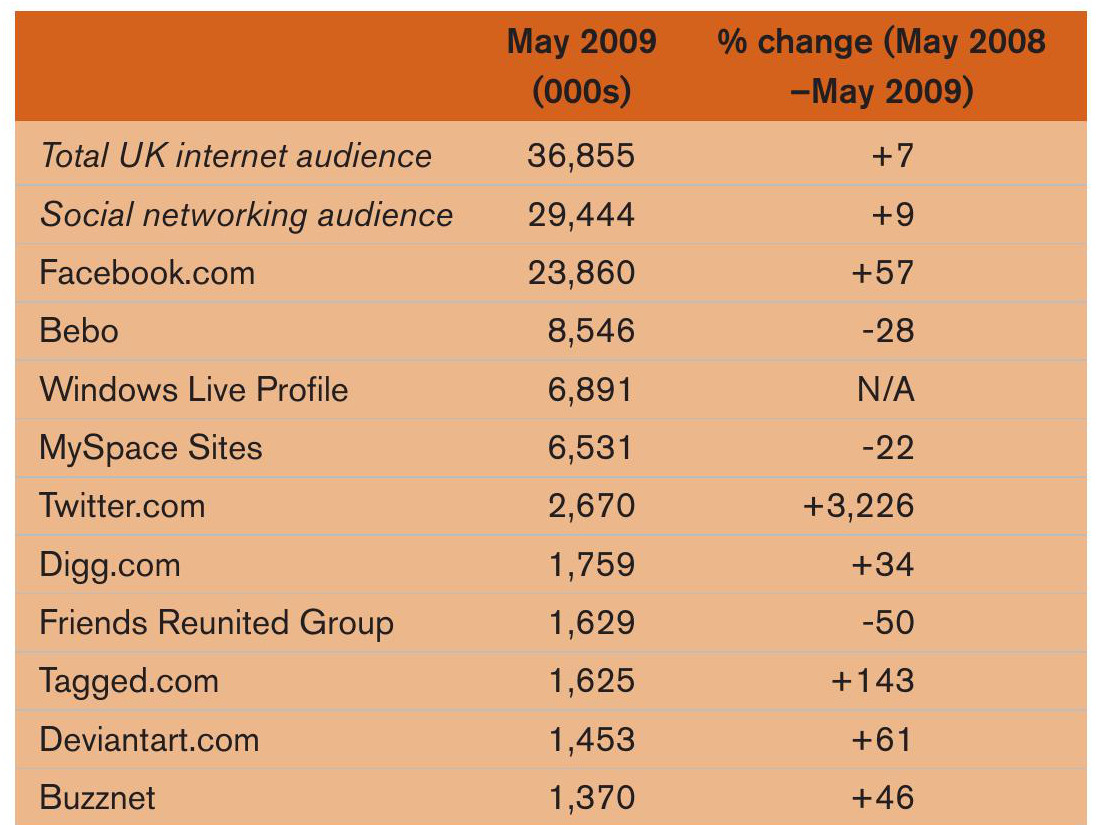
Social networking has become a mainstream online activity among all age groups, and is now seen by many as an essential part of modern life. Facebook, for example, has 120 million active users worldwide. Research published by Ofcom (the Office of Communications) in April 2008 revealed that 30% of all British adults had a social networking profile. Similarly, research by comScore.inc, a world leader in the measurement of online activity, found that in the month of May 2009, 29.4 million people in the UK (80% of the total online UK population) accessed at least one social networking site. This represents a 9% growth compared to the previous year. Facebook proved the most popular site, while Twitter showed the greatest amount of growth — more than 3,000%. Twitter had only 100,000 UK users in May 2008, but by the summer of 2009 this figure had mushroomed to 2.6 million (see Table 1).
The incidence of setting up a social networking profile and visiting networking sites varies with age, and 15–34-year-olds are the most likely to be involved. The comScore research showed, however, that even among internet users aged 55+, two thirds had visited a social networking site during the survey month. The Ofcom research found that almost half (49%) of all children aged 8–17 who use the internet had set up their own profile. Despite the fact that most social networking sites have a minimum age for users, typically 13 or 14 years, 27% of 8–11-year-olds who are aware of social networking sites say that they have an online profile.
Your organisation does not have access to this article.
Sign up today to give your students the edge they need to achieve their best grades with subject expertise
Subscribe




